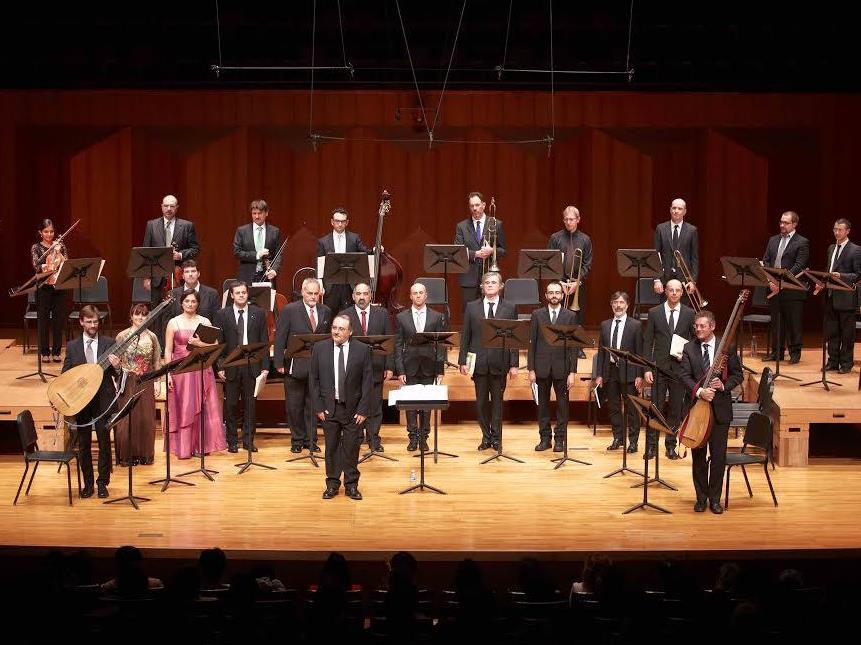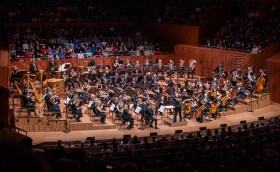Image: supplied.
If we are to try to define ‘genius’ we might start with the following: a person who demonstrates exceptional intellectual ability or originality typically that it is associated with the achievement of new advances in a domain of knowledge. Like France’s Pierre Boulez who passed this year aged 90, Italy’s Claudio Monteverdi was such a person. His outlandish harmony, dramatic fervour and elaborate ornamentation give a start to what I would like to write about here.
‘Semplice’ is a good word to begin with. Honesty, simplicity and integrity of parts. We are unsure why Monteverdi wrote his magnificent Vespro della Beata Vergine in 1610. They fit no particular liturgy nor occasion of time. It has been suggested that the work was written as a calling card to release himself from the strenuous duties for the Gonzaga family in Mantua for more reasonable working conditions working for the church. Further there are several questions which need to be answered regarding what vocal forces the work was scored for (in this performance soloists were the same singers as in the ensemble music); the work offers two versions of the Magnificat (we heard the larger of the two) and there are decisions to be made with two sections as to whether high or low pitch are used (low was chosen).
This remarkable work straddles the Renaissance and Baroque, species counterpoint was replaced with basso continuo or chordal-based music, text is set with a new level of subtlety and nuance. Monteverdi’s music reflects these times of striking originality. Three years before, Monteverdi completed his masterpiece opera Orfeo and the composer had completed several books of secular madrigals. Orfeo arguably surpasses the Vespers for invention, dramatic directness and (even) beauty though let us recognise that the standards here are as high as they get. In the setting of the Vespers, cadences are given particular extravagance, the setting of cantus firmus chant is ingenius.
Appearing for their first time in Australia for the Melbourne Recital Centre before travelling to the New Zealand Festival and then the Festival of Perth, the 23-member Concerto Italiano, are now the acknowledged masters of this music. For many years English baroque ensembles claimed superiority over this repertoire and it is a joy that this Italian ensemble of instrumentalists and singers now have the international benchmark status for ground-breaking interpretations that they do.
To pick out highlights seems unnecessary, even inappropriate, the standard being very high throughout. However, the memory of soprani Anna Simboli and Monica Piccinini’s glorious rendition of Sonata sopra Sancta Maria and tenor, Raffaele Giordani’s sublime reading of the Motet: Nigra sum will remain for some time. Other qualities included perfect diction, clear balance of voices and instruments blending one each per part, thrilling ornamentation, the subtle shaping of phrases, particularly the ends of phrases and perfectly matched, warm, open Italian vowels used in the Latin text. David Irving’s program annotations were excellent. May I briefly also pay homage to our wonderful Melbourne Recital Centre. It would not be possible to find a better venue in the world to hear this music. Following the final antiphonal ‘Amen’ the Hall erupted with applause. There were shouts of ‘bravo’ from the capacity audience. Many stood. This first-rate performance has already entered my account of highlights of the year.
Rating: 5 stars out of 5
Concerto Italiano
Directed by Rinaldo Alessandrini
Elisabeth Murdoch Hall, Melbourne Recital Centre
Presented by Melbourne Recital Centre
Tuesday, 23 February, 2016





